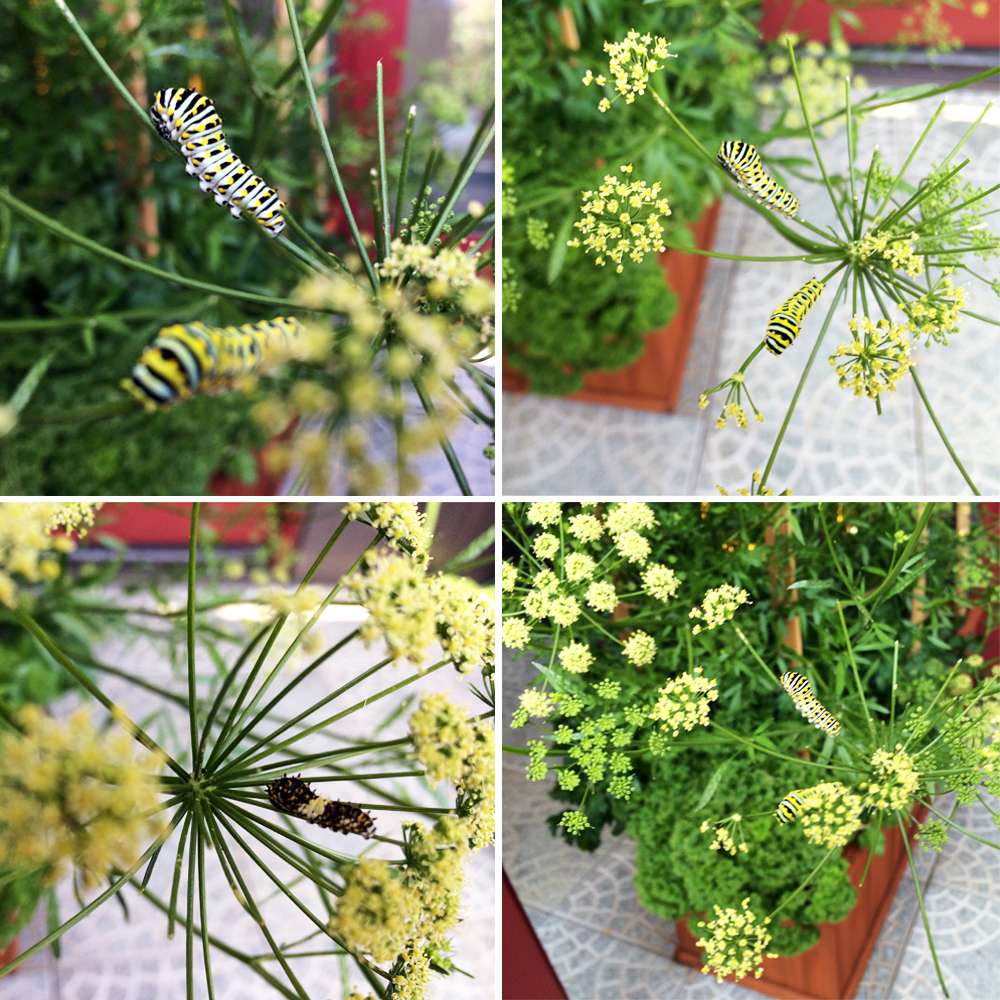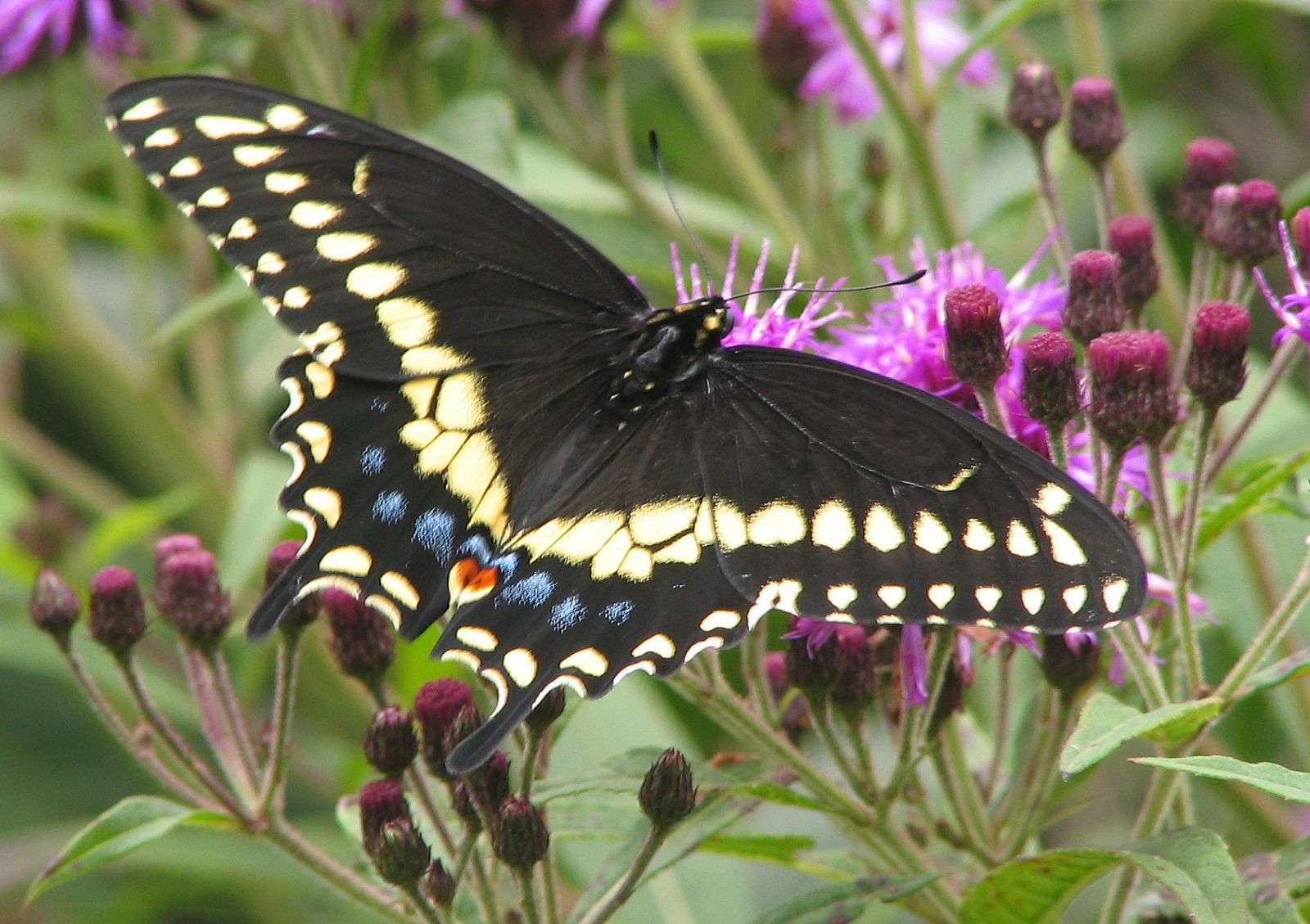Hello to our Eastern Black Swallowtail Caterpillars
12 Aug 2014, Posted by in BlogWe are happy to welcome our Eastern Black Swallowtail butterfly caterpillars! Buckminster Fuller said, “There is nothing in a caterpillar that tells you it’s going to be a butterfly”, but we’ve intentionally designed Bright ‘n Green’s gardens and landscaping to offer native species that move in the ability to become the beautiful pollinating butterflies they can be.

Taking flight in late March and continuing until September, the female Eastern Black Swallowtail butterflies lay small yellow eggs on host plants, after mating. The caterpillars that hatch are initially brownish-purple and white, resembling small bird droppings as camouflage while they begin to eat the host plant. Our caterpillars, pictured above, are further along in their life cycle, and are about two inches long, leaf-green with white, black bands, and yellow spots. Eventually the caterpillars will form chrysalises that they will cocoon in through the Winter until Spring when they hatch into adults, like the one pictured below.

Both male and female Eastern Black Swallowtails are bluish-black with yellow spots on the wings. They also have two orange eyespots with black dots in the middle. The male has a yellow band on the hindwings with a blue cloud under it. The female has a row of yellow dots above a blue band. It’s easiest to remember that males have more yellow, and females have more blue.
Like all butterflies, Eastern Black Swallowtails are good pollinators, and the Black Swallowtail is considered to be a handsome specimen by butterfly watchers, like its more well known brother, the Monarch. Unlike Monarch butterflies though, studies found that the pollen of genetically modified plants significantly reduce the growth of Black Swallowtail. There is currently no detectable effect on Monarchs, though there is also proof of greater caterpillar mortality from transgenic plant pollen.

So you can see why we are so excited the butterflies are making Bright ‘n Green their home.
FUN FACT: Black Swallowtail butterflies are mimics, meaning they pattern other animals. Its cousin, the Pipevine Swallowtail is poisonous to many predators. By copying the Pipevine Swallowtail, the Eastern Black Swallowtail gains protection from predators, even though it is not poisonous. That’s one way to fake it till you make it!

